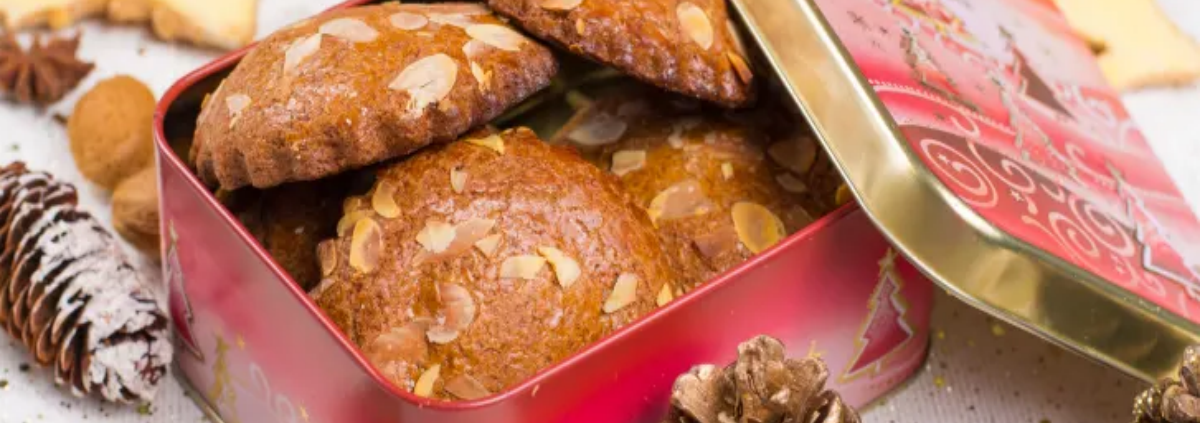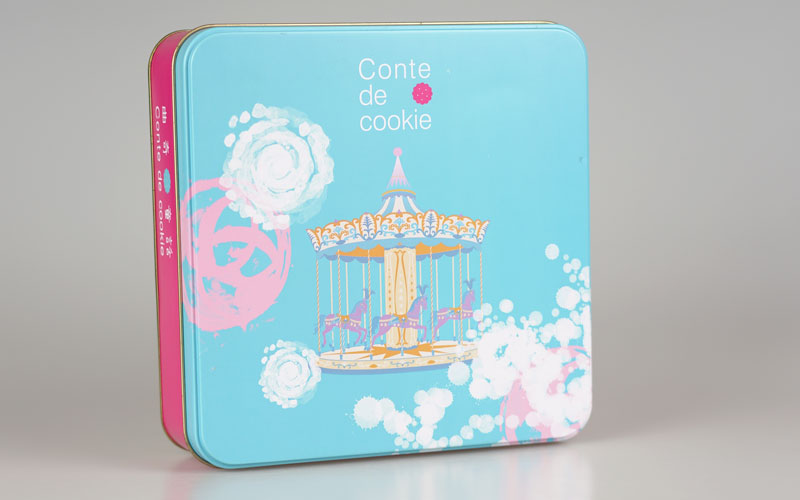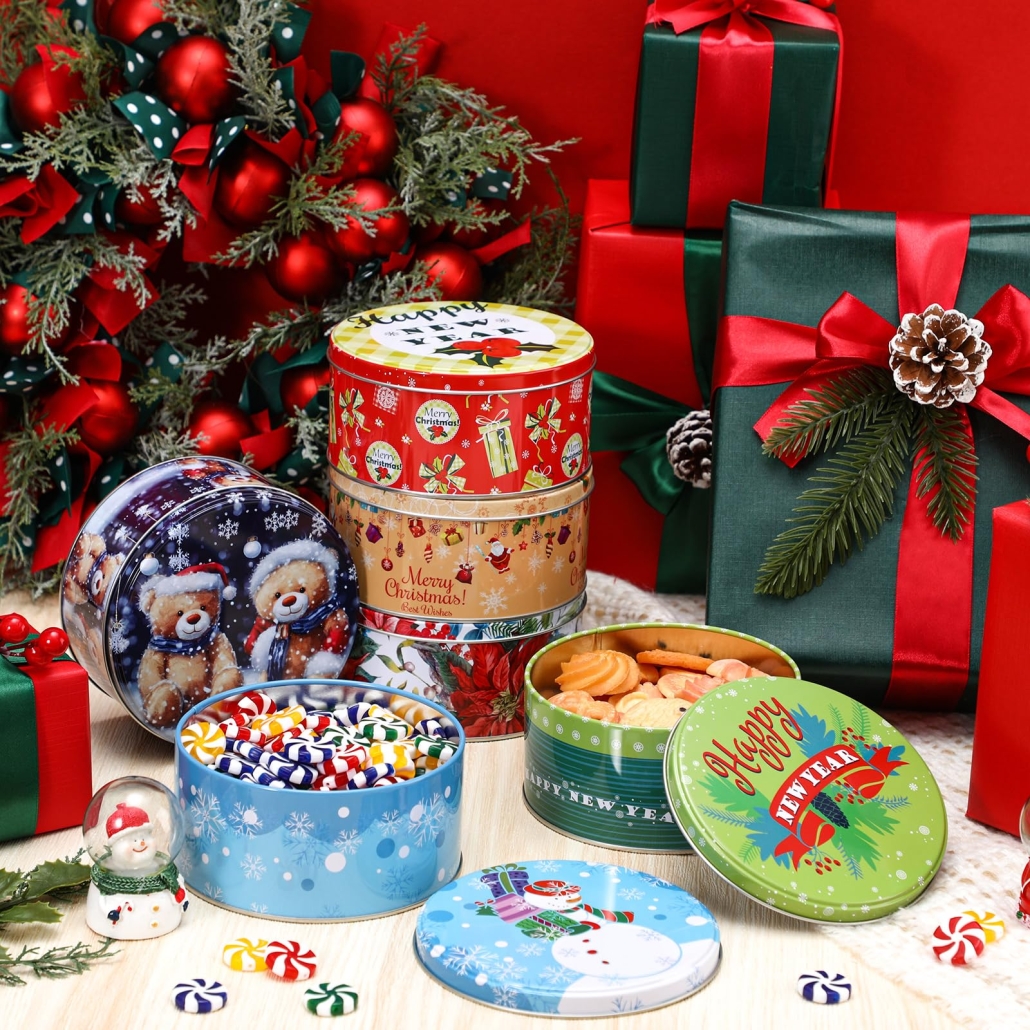Best cookie tin shapes and sizes for retail sales
A cookie tin of the right shape and size can transform cookies into a compelling, premium gift item that’s sure to attract repeat purchases. But that requires a shape, size, and specifications that meet consumer needs and retailer restrictions. As an experienced tin can manufacturer, I provide packaging for cookie brands and co-packers, and I can help you understand the appropriate cookie tin shapes and sizes for each use case. For gift jars, larger formats and custom shapes can create a higher perceived value. Additionally, for everyday stock keeping units (SKUs), compact round or square standard height cans maximize shelf space and minimize shipping costs. For wholesale, shallow rectangular tins nest efficiently on pallets, reducing storage and handling costs.
How Consumer Behavior and the Retail Environment Determine Cookie Tin Shape
First, when choosing the right cookie tins, align it with how consumers actually use it. Determine whether buyers are purchasing cookies for immediate consumption, gifting, or storage, and ensure the packaging meets these needs. For gifting and seasonal purchases, consumers prioritize aesthetic appeal, reusability, and perceived premium quality. For everyday snacking, they prioritize a convenient size that’s easy to store in the pantry or divide into multiple portions.
Round cookie tins remain the most popular retail packaging format because they are classic, easy to stack, and provide even pressure distribution. They are also well-suited for cross-merchandising on the shelf. Square and rectangular cookie tins offer increased frontage, maximizing shelf presence—an extra frontage is crucial in crowded shelf layouts. If your target customers are office workers who prefer to snack at the checkout, smaller single-serve jars (approximately 80-120 grams or 3-4 ounces) are ideal. For family packs or gifting, 200-500 grams (7-17 ounces) packaged tins work better.
Why are Square Cookie Biscuit Storage Tins suitable for retail?
Square cookie biscuit storage tins deserve special attention because they address both practical retail and production challenges. The square tin’s rectilinear design maximizes usable internal capacity and simplifies shelf planning. For example, a 100 x 100 mm square jar utilizes shelf space more efficiently than a round tin with a similar footprint. Square cookie tins often accommodate rectangular or grid-shaped liners to keep cookies neatly arranged (for example, two rows of sandwich cookies) and reduce movement during transport. This is particularly important for fragile cookies, such as sandwich cookies or wafers. Furthermore, square tins can be produced in shallow sizes (20-40 mm) for single-layer display or deep sizes (60-120 mm) for stacking with staggered liners. In short, square cookie storage tins offer an excellent balance between retail shelf economy, brand space, and product protection, making them the preferred choice for many cookie production lines.
Sizing Guide: Quantity, Gram Quantity, Size, and Portioning Strategies
Choosing the size of a cookie tin requires a realistic mapping of the number and average weight of cookies to the internal volume and dimensions of the tin. Cookie size and weight vary greatly, with thin, buttery cookies typically weighing 10-18 grams each, while chunky cookies can weigh 30-40 grams or more. Therefore, determine tin size based on the typical cookie size for your SKU.
For single-serving cookie tins, the net weight is 60-150 grams (approximately 3-10 small cookies). Typical internal dimensions are round, with a diameter of 70-90 mm and a height of 20-40 mm, or square, measuring 70 × 70-90 × 90 mm. These tins are suitable for checkout counters. For snack/sharing tins, the net weight is 150-300 grams (approximately 10-20 small cookies). Typical dimensions are round, with a diameter of 95-120 mm and a height of 30-60 mm, or square, measuring 100 × 100-130 × 130 mm. These tins offer a balance of portability and value.
For gift tins or family packs, the target weight is 300-700 grams. Typical dimensions are round, 140-200 mm in diameter and 40-120 mm in height, or rectangular, 200 × 120 × 60-100 mm. Other creative shapes are also available. These sizes are suitable for high-end gifts and seasonal promotions. When specifying lid designs, a general rule is to allow 4-8 mm clearance above the tallest biscuit in single-layer packaging, with an additional 1-2 mm clearance between each liner layer between stacked layers.
Material, Surface Treatment, and Printing
Material and surface treatment influence product protection and perceived quality. Tinplate remains our standard raw material due to its combination of rigidity, recyclability, and excellent printability. For the interior, a food-grade varnish or epoxy coating is essential to prevent flavor transfer and corrosion from buttery or acidic ingredients.
Decoration choices can also influence purchase intent. Offset and rotogravure printing provide consistent, high-fidelity print results for high-volume production. Digital printing has become a cost-effective option for smaller runs or SKUs requiring frequent design changes. Embossing, debossing, and hot stamping enhance perceived value, particularly for premium biscuit gift tins. For square biscuit storage tins, graphic designs allow for elegant hot stamping and all-over printing, maximizing brand impact. In terms of surface treatment, matte varnish can be added for a refined feel and scratch resistance, while glossy varnish enhances color saturation and shelf visibility. Spot UV or tactile varnish can highlight brand logos or product imagery. Also, consider a protective topcoat to prevent wear and tear during retail.
Matching the shape and function of the cookie tin to your brand needs
Choosing the best cookie tin for retail requires balancing consumer behavior, shelf economics, product protection, and production practicalities. Round jars offer a classic appeal and good distribution characteristics, while square cookie storage jars provide shelf efficiency and excellent print quality. Rectangular and multi-layer tins can meet specific stacking or display needs. Therefore, the jar size should be selected based on the flavor and price point of the cookie.
Frequently Asked Questions About Cookie Tins
Q1. What size cookie tin is best for gifting or everyday retail?
A: For gifting, larger tins in the 300-700 gram range (e.g., 140-200 mm diameter, 40-120 mm height) can convey premium value. For everyday retail, snack/share sizes (150-300g) or single-serve jars (60-150g) are more practical, often sell faster at checkout, and are more convenient.
Q2. How many cookies can a standard square cookie tin hold?
A: The number of cookies depends on the diameter and thickness of the cookies. As a rough estimate, a 100×100×40mm square mold can hold approximately 8-16 small cookies (12-20g each). A 130×130×50mm mold can hold approximately 18-30 small cookies. Prototypes should be made based on the actual cookie size to set the quantity and prevent breakage accurately.
Q3. Are custom-shaped cookie tins cost-effective?
A: Custom-shaped cookie tins can command a higher shelf price and generate strong seasonal demand, but require investment in molds and a higher minimum order quantity.




 Facebook
Facebook Twitter
Twitter Linkedin
Linkedin
